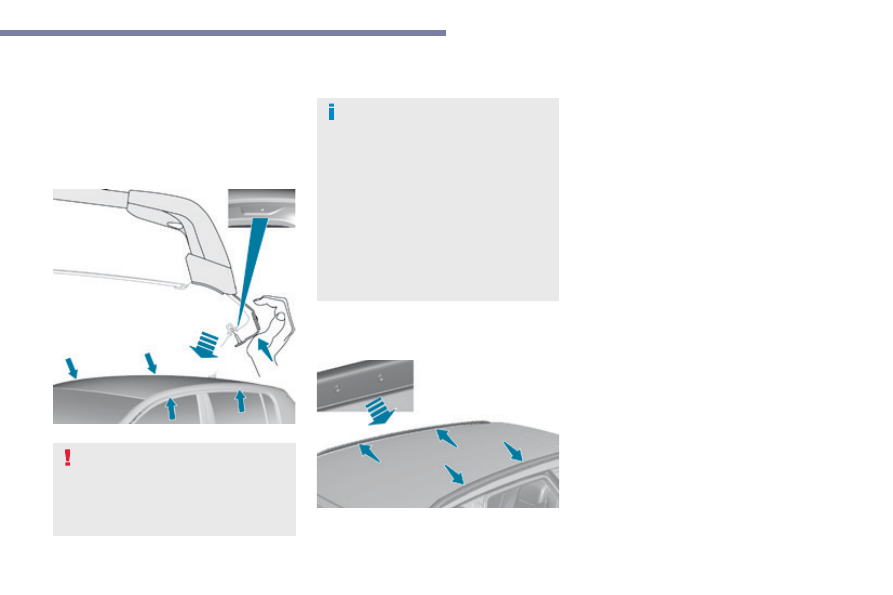Peugeot 308 (2017 year). Instruction - part 15

223
7
Practical information
308_en_Chap07_info-pratiques_ed01-2016
Fitting roof bars
Do not exceed the maximum authorised
load, shown in the instructions for the
roof bars.
When fitting roof bars, you must only secure
them to the four anchorage points on the sides
of the roof. these points are hidden by the
vehicle's doors when they are closed.
use accessories approved by
PeugeOt observing the manufacturer's
recommendations and fitting instructions
so as to avoid the risk of damaging the
body (deformation, scratches, ...).
If the height exceeds 40 cm, adapt the
speed of the vehicle to the profile of the
road to avoid damaging the roof bars
and the fixings on the roof.
Be sure to refer to national legislation in
order to comply with the regulations for
transporting objects which are longer
than the vehicle.
Fitting on longitudinal
bars
You must attach the transverse bars at the
engraved markings on the longitudinal bars.
As a safety measure and to avoid damaging the
roof, it is essential to use the transverse bars
approved for your vehicle.
Observe the instructions on fitting and use
contained in the guide supplied with the roof
bars.
Recommendations
-
Distribute the load evenly, avoiding
overloading on one side.
-
Arrange the heaviest part of the load as
close as possible to the roof.
-
Lash the load securely.
-
Drive gently: the vehicle will be more
susceptible to the effects of side winds and
the stability of the vehicle may be affected.
-
On a long journey, check the security of the
load at every stop.
-
Remove the roof bars once they are no
longer needed.